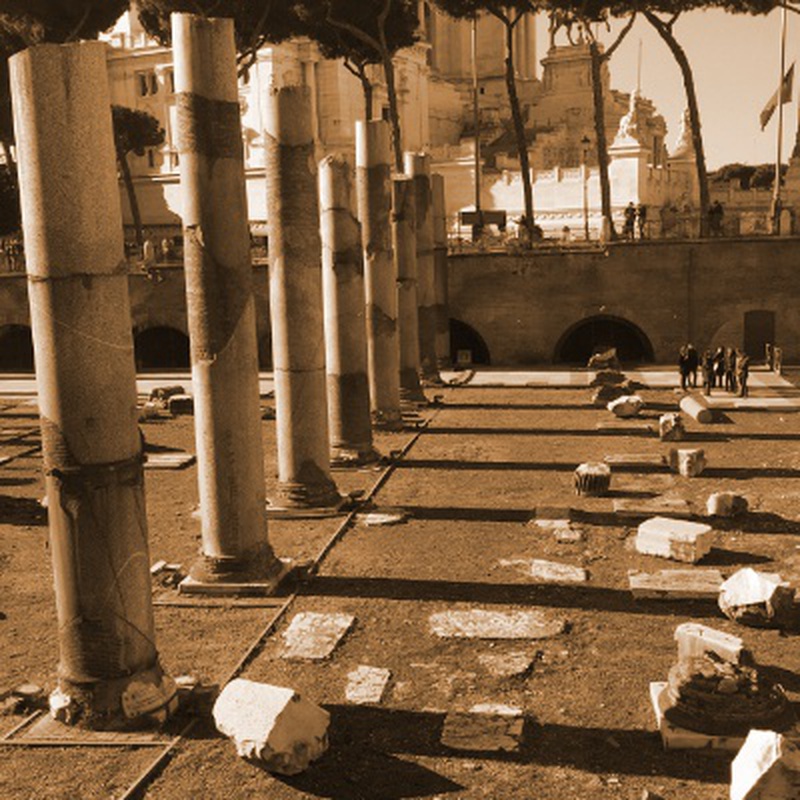Posted by Shazarch on 18 Mar 2021
Basilica Ulpia
112 AD, Rome
Archaeological site
Inaugurated in 112 AD, the Basilica Ulpia (which took its name from Trajan's family: the Gens Ulpia ) served as an immense court. The importance of its legal functions was underlined by the grandeur of its architecture. On the outside it appeared as a building about 40 meters high which completely hid the view of the Trajan's Column from the Piazza del Foro. The Basilica overlooked the Piazza del Foro with a large colonnade on the ground floor and numerous bas-relief decorations on the upper floor, depicting trophies of weapons alternating with statues of captive Dacian warriors (some statues and fragments of the decoration are exhibited in the Museum of the Imperial Fora ) . The interior of the building was divided into five vast naves, four smaller side aisles (each 6 meters wide) and a major central one (25 meters wide), separated by rows of tall monolithic columns in gray Egyptian granite. Two large hemicycles opened on the short sides. The presence of a second floor made it possible to follow the trials that were held in the courts on the ground floor. During the Middle Ages the Basilica partly collapsed and was partly demolished to recover construction material. In its place, houses and religious buildings were built, destroyed on the initiative of the French Governorate (1812-1813) in order to free the ancient ruins. After the return of the Papal Government, the refurbishment of the area was completed in 1820 by the will of Pope Pius VII (1800-1823).
